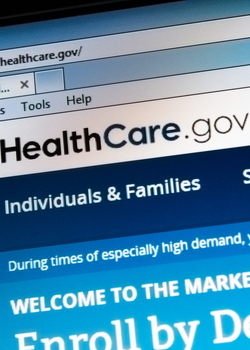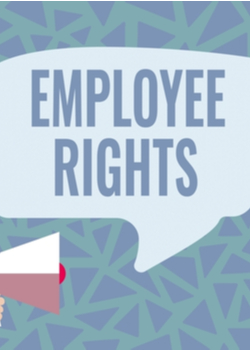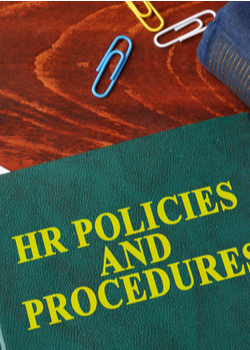Everything You Need to Know About Gateway Drugs
Hank’s doctor prescribed painkillers after his biking accident. Two years later, his life revolved around an addiction to heroin.
Kim was introduced to cigarettes as a teenager. Now she smokes crack cocaine on a regular basis.
Did these addictions begin with the “gateway drugs” of nicotine and prescription pills? Or did Hank and Kim start using illicit substances for other reasons?
The theory of gateway drugs emerged decades ago…and it’s still up for debate today.
Let’s talk about it.
What is a Gateway Drug?
 Gateway drugs are substances “whose use is thought to lead to the use of and dependence on a harder drug.” In other words, they open the gate to the world of drugs.
Gateway drugs are substances “whose use is thought to lead to the use of and dependence on a harder drug.” In other words, they open the gate to the world of drugs.
While this isn’t a medical term, it’s a phrase coined to express the idea that the use of some substances leads to future drug abuse.
There’s no official list of “gateway drugs,” but there are some substances that are considered to be gateway drugs.
What Substances Are Considered Gateway Drugs?
Nicotine
Nicotine is a highly addictive stimulant that can lead to tobacco dependency. This substance is the main psychoactive ingredient in tobacco products. In 2020, 57.3 million Americans age 12 or older reported using tobacco products in the past 30 days.
Certain statistics from the Centers for Disease Control (CDC) support the idea that nicotine acts as a gateway to illicit drug use. Self-reports of past-month cocaine use, heroin use, marijuana use, binge drinking, and non-medicinal use of prescriptions drugs are all higher for smokers than nonsmokers.
For example, the percentage of people who reported past-month cocaine use was nine times higher for smokers than nonsmokers.
Marijuana
This drug contains the psychoactive chemical delta-9-tetrahydrocannabinol (THC). Using this substance can lead to marijuana use disorder, which can include addiction.
The National Institute on Drug Abuse (NIH) reports that 30 percent of people who use marijuana may have some degree of marijuana use disorder. As of 2015, roughly four million people in the US met the diagnostic criteria for marijuana use disorder.
Some research supports the idea of marijuana as a gateway drug. A 25-year longitudinal study published in Addiction indicated that early marijuana use “was strongly associated with later and more frequent drug use and abuse.”
And another study in the International Journal of Drug Policy reported there was a 44.7 percent chance that people who used cannabis would use other drugs.
Alcohol
The Substance Abuse and Mental Health Services Administration (SAMHSA) reported in 2015 that 15.7 million people over the age of 12 had an alcohol use disorder.
Alcohol is one of the most visible and easiest to obtain substances. It’s also the most socially acceptable gateway drug.
Some statistics indicate that drinking alcohol could lead to other drug use:
- 54 percent of 12th graders who reported they used alcohol, tobacco, and marijuana reported using alcohol first.
- Students who reported alcohol use in 6th grade had higher rates of lifetime illicit substance use than those who didn’t use alcohol until they were older.
Prescription Pills
Strong pain medications (opioids) are often prescribed by doctors or found in the family medicine cabinet. Common prescriptions include oxycodone, hydrocodone, and codeine.
Data gathered from 2002 to 2012 showed the incidence of heroin use was 19 times higher among people who reported prior abuse of opioid pain relievers.
The Mayo clinic reports that anyone who takes opioids is at risk of developing addiction. This is partly because tolerance can develop quickly. So people have to take more and more of the drug to achieve the same effect. And this leads to physical and psychological dependence.
The Department of Health and Human Services reports that 9.7 million people misused prescription pain relievers in 2019. Today, these drugs are responsible for the majority of overdose deaths in the United States.
Do Gateway Drugs Really Lead to Other Drug Use?
 There seems to be evidence supporting the “gateway drug” concept. But the idea is not accepted by all. And there’s also evidence against it.
There seems to be evidence supporting the “gateway drug” concept. But the idea is not accepted by all. And there’s also evidence against it.
One study published by the Department of Health and Human Services (HHS) suggests “gateway drugs aren’t the only entry point to harder substance use and addiction. Instead, there are numerous factors such as poverty, aggressive crime, and social environment that play a major role.”
As this study suggests, the main argument against the idea of gateway drugs is that other factors are also important to consider. Perhaps it’s social interactions, or socioeconomic status, or something else that pushes a person to move on to harder drugs.
The key to keep in mind is that there seems to be a correlation (relationship) between use of these gateway drugs and future drug use. But causation (the reason for a future event) has not been proven. In other words, just because a person uses one of these gateway drugs doesn’t guarantee they will move on to other drug use or develop an addiction.
But it’s absolutely possible that use of gateway drugs puts them at an increased risk.
If you or someone you love is experiencing a substance use disorder, help is available. Call
800-914-7089
( Who Answers?)
today.
Who Answers?)
today.
Government Programs: Pay for Rehab Using the Affordable Care Act
Overheard at a coffee shop:
I thought about getting treatment, but I can’t afford to pay for rehab.
What do you mean? Haven’t you heard of the Affordable Care Act – a lot of people call it Obamacare? Get yourself some coverage under one of those plans, and your rehab’s pretty much paid for.
Really? That sounds too good to be true.
Really! The Affordable Care Act was passed back in 2010, and now it’s a common way for people to pay for rehab. It’s an entire healthcare system that offers insurance plans for sale online. The plans offer coverage just like private health insurance plans, only they’re cheaper.
But it’s a pre-existing condition, so I bet addiction treatment won’t be covered.
 Nope! Under the Affordable Care Act, addiction is no longer considered a pre-existing condition. This system did away with that insurance loophole. The ACA actually requires plans to cover drug and alcohol addiction treatment.
Nope! Under the Affordable Care Act, addiction is no longer considered a pre-existing condition. This system did away with that insurance loophole. The ACA actually requires plans to cover drug and alcohol addiction treatment.
How the ACA Covers Addiction Treatment
The Affordable Care Act requires insurance coverage for addiction treatment to be as complete as treatment for any other medical issue. With one of these plans, you could get a lot of help in paying for rehab.
ACA plans could cover:
- Brief interventions
- Addiction evaluations
- Visits to clinics
- Addiction treatment medication
- Drug and alcohol testing
- Counseling
- Home health care
- Medical detox
- Other inpatient treatments
Where Can You Sign Up for Coverage?
Just go to the site Healthcare.gov. There’s an open registration period, but you can also make an enrollment request if you happen to miss that window. Once you log into the Health Insurance Marketplace, all you have to do is create an account and fill out an application. Then you can look through all the plans and choose which one best suits your needs.
Types of Marketplace Plans
The ACA breaks its policies up using a “metal” ranking system in the Marketplace. There are five types of “metal-level” plans, and they offer the following value ranges:
- Bronze plans cover 60 percent of your expenses
- Silver plans cover 70 percent of your expenses
- Gold plans cover 80 percent of your expenses
- Platinum plans cover 90 percent of your expenses
And Catastrophic plans cover 60 percent of the total average cost coverage. But that one isn’t available for everyone – only people under the age of 30 or someone who has a hardship situation.
Do I Have to Get Approved?
Well, that depends. Anyone can buy an ACA-sponsored plan. But you may also qualify for discounts based on your income and family size. If your household income is between the federal poverty level and four times that level, you can get financial assistance to lower the premiums and out-of-pocket. That makes the coverage even more affordable.
You can just fill out your info on the site and it will tell you which plans and discounts you qualify for. Complete an application, and once you’re approved, you can pick a package that will cover the treatment you want.
Does It Work With Medicaid and Medicare?
The Affordable Care Act actually expanded what’s available for people covered by Medicare and Medicaid. And when you fill out an application on the Marketplace site, if you qualify for Medicaid programs, you’ll get info about those, too.
Does Everyone Accept ACA Coverage?
Healthcare providers usually have the option to accept certain insurance coverage or not. But many addiction treatment centers accept the plans you can get on the ACA Health Insurance Marketplace.
Yep – I know it has been for a lot of people. My cousin was able to pay for rehab and get treatment that saved his life. He’s been sober for almost two years now.
Paying for Rehab With ACA Coverage: Let’s Review
The ACA has impacted addiction treatment in four areas:
Insurance Coverage
- Extends insurance coverage to previously uninsured people
- Prevents insurers from denying insurance to people with pre-existing conditions (such as substance use disorders)
Insurance Regulations
- Requires all insurance plans to cover substance use disorder screening and brief intervention
- Requires coverage of the Essential Health Benefits package (which often includes substance use disorder treatment)
Parity (Equal Coverage)
- Extends the Mental Health Parity and Addiction Equity Act, requiring insurers to cover substance use treatment at the same level as other medical services.
Integrated Treatment
- Offers opportunities to integrate substance use disorder treatment with mainstream healthcare.
- Allows reimbursement for multiple services under a single budget.
- Incentivizes coordination and integration of care for SUD patients.
Affordable Care Act Fast Facts
 2 million: As of September 2021, 12.2 million people were enrolled in ACA plans.
2 million: As of September 2021, 12.2 million people were enrolled in ACA plans.- 87 percent: In 2020, 87 percent of the people who purchased coverage through the ACA Marketplace received subsidies to lower the cost.
- 32 million: By 2020, the expanded coverage of the ACA gave first-time access to addiction treatment coverage to 32 million.
Finances Don’t Have to Hinder Addiction Treatment
Are you worrying how you’d pay for rehab? Coverage through the Affordable Care Act could be the perfect solution. Visit Healthcare.gov to learn more about the plans and discounts that are available today.
Get help today at
800-914-7089
( Who Answers?)
to learn about the available addiction treatment programs near you.
Who Answers?)
to learn about the available addiction treatment programs near you.
Finding Substance Use Treatment Programs for Veterans
Did you serve in the active military, naval, or air service?
Yes? Did you know you most likely qualify for health care benefits through the Department of Veterans Affairs (VA)?
And did you also know that these benefits include access to substance use treatment programs for veterans?
Currently, more than 9 million U.S. veterans are enrolled in the VA. These veterans can take advantage of the health care offered at the VA’s many medical centers and clinics.
And that includes the VA Alcohol and Drug Dependence Rehabilitation Program. If you’re looking for substance use treatment options, here’s what you need to know.
VA Health Benefits and Treatment Programs for Veterans
 If you’re already enrolled in the VA health care system, you can tap into these treatment sources now. If you’re not enrolled, check to see if you qualify and enroll to access your benefits.
If you’re already enrolled in the VA health care system, you can tap into these treatment sources now. If you’re not enrolled, check to see if you qualify and enroll to access your benefits.
To qualify for VA health care benefits, you must:
- Have actively served in the military, naval, or air service
- Been discharged under any condition other than dishonorably
- Have served 24 continuous months or the full period of active duty
Some exceptions:
- Members of the Reserves or National Guard who were called to active duty and completed the full period may be eligible.
- Minimum duty requirements may not apply to those discharged for a disability or hardship.
These exceptions are two of the most common, but there are others (including dishonorable discharges). So, the VA encourages all veterans to apply for benefits.
To apply, visit the VA benefits and health care page. For assistance, you can also visit a local VA medical facility. Here’s a VA Location Finder to locate one nearby.
Next Steps
After you apply for VA health benefits, talk to your primary care provider about your substance use. If you don’t have a VA primary care provider, contact your local VA medical center. You can also find a local VA Substance Use Disorder program with this location guide.
VA Substance Use Treatment Programs for Veterans
The VA Alcohol and Drug Dependence Rehabilitation Program offers various levels of rehab as well as medical, vocational, and social therapies. These programs are provided through VA clinics and medical centers. Available treatment programs may include detox, inpatient care, outpatient programs, and psychiatric care.
- Cognitive Behavioral Therapy (CBT): This treatment helps you balance your thoughts and manage urges to drink or use drugs. It uses a problem-solving approach to deal with substance abuse.
- Other counseling services: VA rehabilitation programs offer group counseling, marriage and family counseling, as well as self-help groups.
- Motivational Interviewing (MI): This approach allows you to examine your motivations for making a change and the potential benefits of that change.
- Detox: Medically supervised detox with additional services to help stabilize safely and comfortably.
- Medications: Many programs offer medications to help reduce cravings, reduce the risk of overdose, and prevent relapse.
- Opioid Use Disorder Treatment: To treat opioid use disorders (OUD), VA programs typically offer a combination of behavioral therapy and medication.
- Residential Care: You can receive live-in care as part of your rehabilitation treatment.
- Continuing Care: Continuing care, such as sober living, to help prevent relapse.
- Specialized Programs: Programs for veterans with unique concerns, such as veterans with PTSD or veterans experiencing homelessness.
- Treatment for Co-occurring Disorders: Often, substance abuse is related to other mental health concerns. VA treatment regularly includes programs that address PTSD, depression, anxiety, and other psychiatric difficulties.
- Telehealth: Some treatments may include telehealth options. These allow veterans to access treatment through phone or video.
- Online Support: Treatment services are also available through VA apps. These apps can help you manage stress, depression, and other mental health concerns. You can also access a self-help portal that offers additional mental health resources.
Paying for VA Substance Use Treatment
 Veterans don’t need health insurance coverage to access VA benefits. If you have other coverage, like Medicare or private insurance, you can access VA health care benefits while keeping your plans.
Veterans don’t need health insurance coverage to access VA benefits. If you have other coverage, like Medicare or private insurance, you can access VA health care benefits while keeping your plans.
Here are some common coverage options.
Private insurance: If you have private insurance, the VA facility will bill that company for services.
TriCare: This is a private insurance program for active-duty service members, veterans, their families, and survivors. It helps cover substance abuse treatment through VA hospitals.
Medicaid: This program offers free or low-cost health coverage based on low-income requirements. One in ten veterans uses Medicaid coverage to some extent.
Medicare: Senior veterans often qualify for VA benefits and Medicare. In some cases, you may locate a program covered by Medicare that’s closer than the nearest VA hospital. So, it’s good to check your options.
Of course, not everyone has access to these payment options. The VA is committed to working with veterans who need substance use treatment, offering free or low-cost treatment to those in need.
For information about treatment options for you or a loved one, call
800-914-7089
( Who Answers?)
today.
Who Answers?)
today.
Understanding the Family and Medical Leave Act (FMLA) for Rehab
If I go to rehab, I’ll lose my job, right? I’ll be gone for weeks, so there goes my employment!
For many, this is a common barrier to seeking treatment. Jim wanted to get help for his addiction, but one thing was holding him back — he was worried about getting fired. Fortunately for Jim, and the millions of other Americans struggling with addiction, the Family and Medical Leave Act (FMLA) may alleviate this common concern.
Here’s how it works.
FMLA: What Does It Cover?
 The Family and Medical Leave Act helps people take care of family and medical concerns and keep their jobs. It allows employees to take up to 12 weeks of unpaid leave per year, and their job (including health benefits) is protected while they’re away.
The Family and Medical Leave Act helps people take care of family and medical concerns and keep their jobs. It allows employees to take up to 12 weeks of unpaid leave per year, and their job (including health benefits) is protected while they’re away.
Under FMLA, you can take this unpaid leave for the following reasons:
- To care for a newborn child
- Caring for a child you just adopted or took in for foster care
- To care for an immediate family member with a serious health condition
- An inability to work due to a serious health condition
FMLA: Who Does It Cover?
FMLA doesn’t apply to every employer, and not every employee is eligible for this benefit. Check the following requirements to determine if you qualify:
For Employers
FMLA applies to:
- All public agencies
- All public and private elementary and secondary schools
- Companies with 50 or more employees
For Employees
Employees are eligible for FMLA leave if they have:
- Been employed for at least 12 months
- Worked at least 1,250 hours over the past 12 months
- Work at a location where the company employs 50 or more employees within 75 miles
FMLA for Rehab and Substance Abuse Treatment
Note reason number 4 on the list above – an inability to work due to a serious health condition. This is where FMLA comes into play for substance abuse treatment. Addiction, no doubt, affects a person’s ability to work, and it is a serious health condition.
That means you can take FMLA to leave for substance abuse treatment if certain conditions are met.
- Treatment must be given by a healthcare provider or through referral by a healthcare provider.
- The time away from work must be for treatment for substance use — not due to absence because of substance use.
If you exercise your right to take FMLA leave for substance abuse treatment, your employer cannot fire you. They must hold your job.
But there are two things to keep in mind. First, remember that the leave is unpaid. Your job will be there for you when you return, but you won’t get paid while you’re away.
Second, if your employer has an established policy that allows them to terminate an employee for substance use (for example, if you show up to work under the influence of drugs), then they can terminate you under that policy if you have violated it.
What if I’m not the one who needs treatment?
Take another look at reason number 3 on the list above – to care for an immediate family member with a serious health condition. You can also take FMLA leave to care for a family member receiving treatment for substance use disorder. This allows you to provide support without worrying about losing your job.
And…what about the cost?
Jim was relieved when he found out he could safely take time off for rehab without losing his job. But then he hit another roadblock: cost. How would he pay for treatment?
This is where the Paul Wellstone and Pete Domenici Mental Health Parity and Addiction Equity Act (MHPAEA) comes into play. Mental health parity (equality) means that treatment for mental health must be covered at the same level as treatment for physical health. So, if Jim’s health coverage includes unlimited visits for diabetes, for example, then insurance must also cover unlimited visits for a diagnosed substance use disorder.
There are some exceptions. But a majority of health benefit plans fall under this federal parity law. Jim may be able to cover the cost of substance abuse treatment through his employer’s health insurance plan.
Steps to Using FMLA for Rehab
 FMLA and medical parity laws are in place to help you — so take advantage of them. If you or a loved one needs treatment for an addiction, consider taking time off under FMLA for rehab.
FMLA and medical parity laws are in place to help you — so take advantage of them. If you or a loved one needs treatment for an addiction, consider taking time off under FMLA for rehab.
Remember, under this law, they cannot fire you for taking the time off. They must hold your job for you while you’re in treatment. And your insurance provider may be required to pay for the treatment.
To use FMLA for rehab, take the following steps:
- Get an official diagnosis (to prove you have a serious health condition).
- Determine if you’re eligible based on days and hours of employment.
- Find out if your company is required to comply with FMLA.
- Provide notice to your employer concerning your treatment leave. (They may require a 30-day notice.)
Don’t forget to check with your health benefits provider to see if they’ll cover treatment costs.
Get help today – contact
800-914-7089
( Who Answers?)
to learn about the available addiction treatment programs near you.
Who Answers?)
to learn about the available addiction treatment programs near you.
Using Your Company’s Employee Assistance Program for Drug and Alcohol Rehab
William was searching high and low for support. He knew he needed treatment, but he wasn’t sure where to turn for drug and alcohol rehab.
It turns out, the answer was right in front of him — his employer. William’s company had an Employee Assistance Program (EAP) that could provide support for his substance use disorder.
Does your employee offer this benefit?
If you’re like William and need treatment, your employer’s EAP might be the perfect solution. Here’s what you need to know.
Umm…What’s an EAP?
 Employee assistance programs offer services to help employees with personal issues that could affect their work performance. Companies offer these programs in an effort to support their employees and keep their workforce healthy and productive. (It’s a win-win.)
Employee assistance programs offer services to help employees with personal issues that could affect their work performance. Companies offer these programs in an effort to support their employees and keep their workforce healthy and productive. (It’s a win-win.)
An EAP might include services related to health, finances, social issues, or substance use disorders. The program could cover education, counseling, stress management, legal assistance, trauma-intervention, retirement planning, and more.
The exact services offered and how they’re provided depend on what EAP the company chooses. Common types of EAPs are:
- In-house
- External
- Blended
- Management-Sponsored
- Member Assistance
- Peer-Based
How Do Employee Assistance Programs Work?
The EAP offers you and your coworkers free, confidential services. So, if you’re struggling with substance use, you can contact the EAP for help and get support—at no cost, and with no risk of your employer finding out. Your employer pays for the program, but they aren’t told who uses the services.
When you contact the EAP, a counselor will assess your situation and offer next steps to get help. This might include a referral to a substance use treatment center or an EAP treatment program.
Exactly what this looks like will depend on which type of EAP your company has in place. For example, if it’s an in-house program, you may be able to contact someone at your office, but an external program will probably require you to call the third-party service.
Is an EAP Really Free?
Yes, the EAP is free. But…if you are referred to a rehab facility for additional treatment, you’ll need to pay for that. You can use insurance coverage or other benefits to cover those costs.
Are There Any Drawbacks With EAP Benefits?
Not really. The only drawback is that the treatment will probably be short-term. EAPs are usually designed to handle minor issues or refer employees to other resources for continued help. If you’re struggling with substance use, you’ll probably need more than a handful of counseling sessions.
But the EAP is still a good place to start. The program can help you begin treatment and give you guidance about how and where to continue.
Are You Eligible for an Employee Assistance Program?
If your employer offers an EAP, your eligibility is based on employment status. If you work for the company, you’re most likely eligible. And, if you’re a close family member of someone who works for the company, you may also be eligible.
If you’re not sure whether your company has an EAP or if you qualify for services, check with your employer. Ask if there is an EAP service number to call. (You don’t have to say what specific services you’re looking for.) An employee handbook might also have this info.
Can You Get Fired for Going to Rehab?
 The Americans with Disabilities Act states that addiction to alcohol or drugs is a disability. So, if you’re getting treatment for a substance use disorder, an employer can’t fire you for that. (But keep in mind, they could fire you for violating company policies, such as showing up to work under the influence of drugs.)
The Americans with Disabilities Act states that addiction to alcohol or drugs is a disability. So, if you’re getting treatment for a substance use disorder, an employer can’t fire you for that. (But keep in mind, they could fire you for violating company policies, such as showing up to work under the influence of drugs.)
And, if you’re worried about losing your job while you’re at rehab, consider taking FMLA leave. The Family Medical Leave Act (FMLA) requires employers to give eligible employees up to 12 weeks of unpaid leave to deal with serious health conditions (which includes addiction). You won’t be paid for your time away, but at least your job will be waiting for you.
Get help at
800-914-7089
( Who Answers?)
today to learn more about the treatment options available in your area.
Who Answers?)
today to learn more about the treatment options available in your area.
 Gateway drugs are substances “whose use is thought to lead to the use of and dependence on a harder drug.” In other words, they open the gate to the world of drugs.
Gateway drugs are substances “whose use is thought to lead to the use of and dependence on a harder drug.” In other words, they open the gate to the world of drugs. There seems to be evidence supporting the “gateway drug” concept. But the idea is not accepted by all. And there’s also evidence against it.
There seems to be evidence supporting the “gateway drug” concept. But the idea is not accepted by all. And there’s also evidence against it.Who Answers?)
today.
 Nope! Under the Affordable Care Act, addiction is no longer considered a pre-existing condition. This system did away with that insurance loophole. The ACA actually requires plans to cover
Nope! Under the Affordable Care Act, addiction is no longer considered a pre-existing condition. This system did away with that insurance loophole. The ACA actually requires plans to cover  2 million: As of September 2021,
2 million: As of September 2021,  If you’re already enrolled in the VA health care system, you can tap into these treatment sources now. If you’re not enrolled, check to see if you qualify and enroll to access your benefits.
If you’re already enrolled in the VA health care system, you can tap into these treatment sources now. If you’re not enrolled, check to see if you qualify and enroll to access your benefits. Veterans don’t need health insurance coverage to access VA benefits. If you have other coverage, like Medicare or private insurance, you can access VA
Veterans don’t need health insurance coverage to access VA benefits. If you have other coverage, like Medicare or private insurance, you can access VA  The
The  FMLA and medical parity laws are in place to help you — so take advantage of them. If you or a loved one needs treatment for an addiction, consider taking time off under FMLA for rehab.
FMLA and medical parity laws are in place to help you — so take advantage of them. If you or a loved one needs treatment for an addiction, consider taking time off under FMLA for rehab. Employee assistance programs offer services to help employees with personal issues that could affect their work performance. Companies offer these programs in an effort to support their employees and keep their workforce healthy and productive. (It’s a win-win.)
Employee assistance programs offer services to help employees with personal issues that could affect their work performance. Companies offer these programs in an effort to support their employees and keep their workforce healthy and productive. (It’s a win-win.) The
The